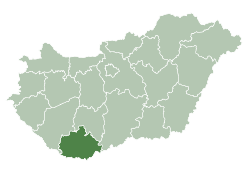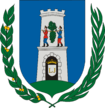Pécs
Pécs (/peɪtʃ/ PAYTCH, Hungarian: [peːt͡ʃ] (![]()
Pécs | |
|---|---|
City with county rights | |
| Pécs Megyei Jogú Város | |
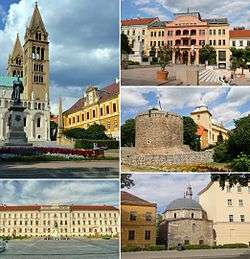 Clockwise from top left: Cathedral, Széchenyi Square, Barbican, Yakovalı Hasan Paşa Mosque, Kossuth Square | |
 Flag 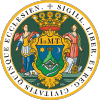 Coat of arms | |
| Nickname(s): "The City of Culture" (A kultúra városa) | |
 Pécs Location of Pécs  Pécs Pécs (Hungary)  Pécs Pécs (Europe) | |
| Coordinates: 46.07125°N 18.23311°E | |
| Country | |
| Region | Southern Transdanubia |
| County | Baranya |
| District | Pécs |
| Established | 2nd century BC |
| City status | 1777 (renewed) |
| Government | |
| • Mayor | Attila Péterffy (Mindenki Pécsért Egyesület) |
| • Deputy Mayor | Szilvia Bognár (DK) Csaba Ruzsa (Independent) |
| • Town Notary | Dr István Lovász |
| Area | |
| • City with county rights | 162.61 km2 (62.78 sq mi) |
| Area rank | 32nd in Hungary |
| Elevation | 153 m (502 ft) |
| Population (1 January 2016) | |
| • City with county rights | 145,347 |
| • Rank | 5th in Hungary |
| • Density | 963.43/km2 (2,495.3/sq mi) |
| • Urban | 251,412 (4th)[1] |
| Demonym(s) | pécsi |
| Population by ethnicity | |
| • Hungarians | 84.0% |
| • Germans | 4.2% |
| • Romani | 2.0% |
| • Croats | 1.2% |
| • Romanians | 0.2% |
| • Serbs | 0.2% |
| • Slovaks | 0.1% |
| • Greeks | 0.1% |
| Population by religion | |
| • Roman Catholic | 39.7% |
| • Greek Catholic | 0.3% |
| • Calvinists | 5.2% |
| • Lutherans | 1.3% |
| • Jews | 0.1% |
| • Other | 2.4% |
| • Non-religious | 27.8% |
| Time zone | UTC+1 (CET) |
| • Summer (DST) | UTC+2 (CEST) |
| Postal code | 7600 to 7636 |
| Area code | (+36) 72 |
| Motorways | M60 Motorway |
| NUTS 3 code | HU231 |
| Distance from Budapest | 238 km (148 mi) Northeast |
| Airport | Pécs (PEV) |
| MPs | List
|
| Website | www |
| Official name | Early Christian Necropolis of Pécs (Sopianae) |
| Criteria | iii, iv |
| Designated | 2000 |
The city Sopianae was founded by Romans at the beginning of the 2nd century, in an area peopled by Celts and Pannoni tribes. By the 4th century, it became the capital of Valeria province and a significant early Christian center. The early Christian necropolis from that era became a UNESCO World Heritage Site in December 2000.[3][4]
Its episcopate was founded in 1009 by Stephen I, and the first university in Hungary was founded in Pécs in 1367 by Louis I the Great. (The largest university still resides in Pécs with about 34,000 students).[5] Pécs was formed into one of the cultural and arts center of the country by bishop Janus Pannonius, great humanist poet.[6]
Pécs has a rich heritage from the age of a 150-year-long Ottoman occupation, like the mosque of Pasha Qasim the Victorious on Széchenyi square, the Tomb of İdris Baba, and the Yakovalı Hasan Paşa Mosque. The Ottoman chronicler İbrahim Peçevi (Ibrahim of Pécs), whose work forms the main body of reference for Ottoman history between 1520-1640, was a native of the city.
Pécs was historically a multi-ethnic city where many cultures intermingled, creating a melting pot of different values, the rich result of 2000 years of history. In 1998 Pécs was given the UNESCO prize "Cities for Peace" for maintaining its cultural minorities, and also for its tolerant and helping attitude toward refugees of the Yugoslav Wars.[7] In 2007 Pécs was third, and in 2008 it was second "Livable City" (The LivCom Awards)[8] in the category of cities between 75,000 and 200,000 inhabitants.[9]
In 2010, Pécs was selected to be the European Capital of Culture alongside Essen and Istanbul. The city motto is "The Borderless City". After receiving the title major renewal started in the city.[10][11] Renewed public places, streets, squares and neighbourhoods, new cultural centers, a concert hall, a new library and center and a cultural quarter were designed.[12][13]
Name
The earliest name for the territory was its Roman name of Sopianæ. The name possibly comes from the plural of the Celtic sop meaning "marsh". Contrary to the popular belief, the name did not signify a single city, and there are no traces of an encircling wall from the early Roman era, only from the 4th century.
The medieval city was first mentioned in 871 under the name Quinque Basilicae ("five cathedrals".) The name refers to the fact that when constructing the churches of the city, the builders used material from five old Christian chapels. In later Latin documents the city was mentioned as Quinque Ecclesiae ("five churches", a name identical in meaning to the German name Fünfkirchen and the Slovak name Päťkostolie[14]).
The name Pécs appears in documents in 1235 in the word Pechyut (with modern spelling: pécsi út, meaning "road to/from Pécs"). In Turkish beş (pronounced [beʃ]) means 5. The name is first recorded after the Mongol invasion of Europe. In other languages: in Latin, Quinque Ecclesiae; in Croatian, Pečuh; in Serbian, Печуј (Pečuj); in Slovak, Päťkostolie; in Czech, Pětikostelí; in Dutch, Vijfkerken; in German, Fünfkirchen; and in Turkish, Peçuy.
Geography
Pécs is located in the Carpathian Basin of Central Europe, in the center of the southern Hungarian county of Baranya. It is bordered by the Mecsek hills to the north, and by a rolling plain to the south. Pécs has a significant mining past. Mecsek dolomitic water is famous for its high density of minerals at constant poise.
The city of Pécs is located near to the border of Croatia. Its southern part is rather flat whereas its northern part clings to the slope of the Mecsek mountains. It has a very favorable climate, and is bordered by a flourishing woody area. During hot summer nights a cooling air streams down from Mecsek to clean the air of the city.[15]
Pécs is bordered by plains to the south (elevation 120–130 m), while the Mecsek mountains rise up to elevations of 400–600 meters behind the city. Jakab-hill, located in the western Mecsek, is 592 m (1942 ft) tall, Tubes, straight above Pécs, is 612 m (2008 ft) tall, and Misina is 535 m (1755 ft) tall.[16] Higher parts of the city climb up to 200–250 m (656 to 820 ft), mainly Pécsbánya, Szabolcsfalu, Vasas and Somogy. Woody areas generally start from elevations of about 300 m (984 ft). The Mecsek hills are marked by numerous valleys which play a key role in ameliorating the climate of the city in the absence of lakes and rivers. Waters coming down from the Mecsek hills flow into the Pécsi stream under the east-west rail road leading them eventually to the Danube.
History
| UNESCO World Heritage Site | |
|---|---|
Remnants of a Paleochristian Church, 4th century AD | |
| Criteria | Cultural: iii, iv |
| Reference | 853 |
| Inscription | 2000 (24th session) |
| Area | 3.76 ha |
| Buffer zone | 4.87 ha |
Ancient Roman city
The area has been inhabited since ancient times, with the oldest archaeological findings being 6,000 years old. Before the Roman era the place was inhabited by Celts. When Western Hungary was a province of the Roman Empire (named Pannonia), the Romans founded several wine-producing colonies under the collective name of Sopianae where Pécs now stands, in the early 2nd century.
The centre of Sopianae was where the Bishop's Palace now stands. Some parts of the Roman aqueduct are still visible. When Pannonia province was divided into four administrative divisions, Sopianae was the capital of the division named Valeria.
In the first half of the 4th century, Sopianae became an important Christian city. The first Christian cemeteries, dating back to this age, are inscribed on the World Heritage List. By the end of the century, Roman rule weakened in the area, mostly due to attacks by Barbarians and Huns.
Early medieval city
When Charlemagne arrived in the area, it was ruled by Avars. Charlemagne, after conquering the area, annexed it to the Holy Roman Empire. It belonged to the Diocese of Salzburg.
A document written in Salzburg in 871 is the first document mentioning the early medieval city under the name Quinque Basilicae (see above). During the 9th century, the city was inhabited by Slavic and Avar peoples and was part of the Balaton Principality, a Frankish vassal state.
The Hungarian city in the Middle Ages
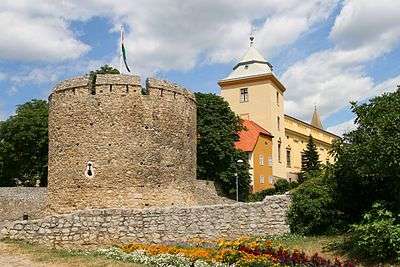


According to György Györffy's theory of place names, after the Hungarians conquered the Carpathian Basin, they retained a semi-nomadic lifestyle, changing pastures between winter and summer. Árpád's winter quarters -clearly after his occupation of Pannonia in 900- were perhaps in Pécs.[17] Later, when the Comitatus of Baranya was established, the capital of the comitatus was not Pécs but a nearby castle, Baranyavár ("Baranya Castle".) Pécs, however, became an important religious centre and episcopal seat. In Latin documents, the city was mentioned as Quinque Ecclesiae. Around 1000, the area was inhabited by the Black Magyars. The Deed of Foundation of the Diocese of Pécs was issued in 1009.
Peter Orseolo, the second king of Hungary, was buried in the cathedral in 1046. The location of his grave is unknown. This is because in 1064, when King Solomon made peace with his cousin, the later King Géza I, they celebrated Easter in Pécs. Shortly after the cathedral burnt down. The cathedral that stands today was built after this, in the second half of the 11th century.
Several religious orders settled down in Pécs. The Benedictine order was the first in 1076. In 1181, there was already a hospital in the city. The first Dominican monastery of the country was built in Pécs in 1238.
King Louis the Great founded a university in Pécs in 1367 following the advice of William, the bishop of Pécs, who was also the king's chancellor. It was the first university in Hungary. The founding document is almost word for word identical with that of the University of Vienna, stating that the university has the right to teach all arts and sciences, with the exception of theology.
In 1459, Janus Pannonius, the most important medieval poet of Hungary became the bishop of Pécs. He strengthened the cultural importance of the city.
Pécs under Ottoman rule

After the Battle of Mohács (1526) in which the invading Ottoman army defeated the armies of King Louis II, the armies of Suleiman occupied Pécs. Not only was a large part of the country occupied by Ottomans, the public opinion of who should be the king of Hungary was divided, too. One party supported Ferdinand of Habsburg, the other party crowned John Zápolya in Székesfehérvár. The citizens of Pécs supported Emperor Ferdinand, but the rest of Baranya county supported King John. In the summer of 1527 Ferdinand defeated the armies of Szapolyai and was crowned king on November 3. Ferdinand favoured the city because of their support, and exempted Pécs from paying taxes. Pécs was rebuilt and fortified.
In 1529, the Ottomans captured Pécs again, and went on a campaign against Vienna. The Ottomans made Pécs to accept King John (who was allied with them) as their ruler. John died in 1540. In 1541, the Ottomans occupied the castle of Buda, and ordered Isabella, the widow of John to give Pécs to them, since the city was of strategic importance. The citizens of Pécs defended the city against the Ottomans, and swore loyalty to Ferdinand. The emperor helped the city and defended it from further Ottoman attacks, but his advisers persuaded him into focusing more on the cities of Székesfehérvár and Esztergom instead of Pécs. Pécs was preparing for the siege, but a day before, Flemish and Walloon mercenaries fled from the city, and raided the nearby lands. The next day in June 1543 the Bishop himself went to the Ottomans with the keys of the city.
After occupying the city, the Ottomans fortified it and turned it into a real Ottoman city. The Christian churches were turned into mosques; Turkish baths and minarets were built, Qur'an schools were founded, there was a bazaar in place of the market. For a hundred years the city was an island of peace in a land of war. It was a sanjak centre in Budin Eyalet at first and Kanije Eyalet later as "Peçuy".
In 1664, Croat-Hungarian nobleman Nicholas Zrínyi arrived in Pécs, with his army. Since the city was well into the Ottoman territories, they knew that even if they occupy it, they could not keep it for long, so they planned only to pillage it. They ravaged and burned the city but could not occupy the castle. Mediaeval Pécs was destroyed forever, except the wall encircling the historical city, a single bastion (Barbakán), the network of tunnels and catacombs beneath the city, parts of which are closed down, other parts are in possession of the famous Litke champagne factory, and can be visited today. Several Turkish artifacts also survived, namely three mosques, two minarets, remnants of a bath over the ancient Christian tombs near the cathedral, and several houses, one even with a stone cannonball embedded in the wall.
After the castle of Buda was wrested from Ottoman rule in 1686, the armies went to capture the rest of Pécs. The advance guards could break into the city and pillaged it. The Ottomans saw that they could not hold the city, and burnt it, and withdrew into the castle. The army led by Louis of Baden occupied the city on 14 October and destroyed the aqueduct leading to the castle. The Ottomans had no other choice but to surrender, which they did on 22 October (see Siege of Pécs).
The city was under martial law under the command of Karl von Thüngen. The Viennese court wanted to destroy the city first, but later they decided to keep it to counterbalance the importance of Szigetvár, which was still under Ottoman rule. Slowly the city started to prosper again, but in the 1690s two plague epidemics claimed many lives. In 1688 German settlers arrived. Only about one-quarter of the city's population was Hungarian, the others were Germans or Southern Slavs. Census of taxpayers from 1698 lists 637 families for which Janja Živković Mandić concludes that 308 were of Croatian nationality (Catholics Croats, Racs, Šokci, Bunjevci, Illyrians, Slavs, Bosniaks) and the remaining 329 were Hungarians, Germans, Serbs or Greeks. According to same census István Tabo mentions 171 Hungarian, 349 Slavs and 79 Germans while Đuro Šarošac mentions that at that time in the city lived 325 Croats, 139 Hungarians, 92 Germans, 53 Vlachs and 28 Serbs.[18] According to 1698 data, South Slavs comprised more than half of the population of the town. Because Hungarians were only a minority of the population, Pécs did not support the revolution against Habsburg rule led by Francis II Rákóczi, and his armies pillaged the city in 1704.
Pécs in early-modern times
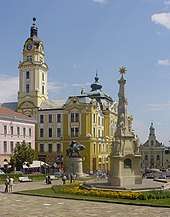
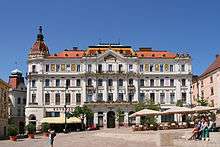

A more peaceful era started after 1710. Industry, trade and viticulture prospered, manufactures were founded, a new city hall was built. The feudal lord of the city was the Bishop of Pécs, but the city wanted to free itself from episcopal control. Bishop George Klimó, an enlightened man (who founded the first public library of the country) would have agreed to cede his rights to the city, but the Holy See forbade him to do so. When Klimó died in 1777, Queen Maria Theresa quickly elevated Pécs to free royal town status before the new bishop was elected. This cost the city 83,315 forints.
According to the first census (held in 1787 by the order of Joseph II), there were 1,474 houses and 1,834 families in Pécs, a total of 8,853 residents, of which 133 were priests and 117 were noblemen.
In 1785, the Academy of Győr was moved to Pécs. This academy eventually evolved into a law school. The first stonework theatre of the city was built in 1839.
Pécs during the 19th century and later
The industry developed a lot in the second half of the 19th century. By 1848, there were 1,739 industrial workers. Some of the manufactures were nationally famous. The iron and paper factories were among the most modern ones of the age. Coal mining was relevant. A sugar factory and beer manufactures were built, too. The city had 14,616 residents.
During the revolution in 1848–49, Pécs was occupied by Croatian armies for a short time, but it was freed from them by Habsburg armies in January 1849.
After the Austro-Hungarian Compromise of 1867 Pécs developed, like all the other cities and towns of the country. From 1867, Pécs is connected to the nearby town Barcs by railway, and since 1882 it is also connected to Budapest. In 1913, a tram system has been founded, but it was extinguished in 1960.
At the end of World War I, Baranya county was occupied by Serbian troops, and it was not until August 1921 that Pécs could be sure that it remains part of Hungary. The University of Pressburg (modern-day Bratislava, Slovakia) was moved to Pécs after Hungary lost Pressburg according to the Treaty of Trianon.
During World War II, Pécs was captured by Soviet troops of the 3rd Ukrainian Front on 29 November 1944 in the course of the Budapest Offensive. The city suffered only minor damages, even though a large tank-battle took place 20–25 kilometres (12–16 miles) south of the city, close to the Villány area late in the war, when the advancing Red Army fought its way towards Austria.
After the war, development became fast again, and the city grew, absorbing several nearby towns. In the 1980s, Pécs already had 180,000 inhabitants.
| Year | Pop. | ±% |
|---|---|---|
| 1870 | 30,821 | — |
| 1890 | 43,869 | +42.3% |
| 1900 | 53,721 | +22.5% |
| 1910 | 60,237 | +12.1% |
| 1920 | 58,808 | −2.4% |
| 1930 | 74,395 | +26.5% |
| 1941 | 88,473 | +18.9% |
| 1949 | 88,302 | −0.2% |
| 1960 | 114,655 | +29.8% |
| 1970 | 149,253 | +30.2% |
| 1980 | 168,715 | +13.0% |
| 1990 | 170,039 | +0.8% |
| 2001 | 162,489 | −4.4% |
| 2011 | 156,049 | −4.0% |
| 2019 | 142,873 | −8.4% |
After the end of Socialist era (1989–1990), Pécs and its county, like many other areas, were hit hard by the changes, the unemployment rate was high, the mines and several factories were closed, and the war in neighboring Yugoslavia in the 1990s affected the tourism.
Pécs was also the centre of the Nordic Support Group (NSG) consisting of units from Denmark, Norway, Sweden, Finland, and Poland, as part of the IFOR and later SFOR NATO deployments, after the Dayton Agreement and following peace in former Yugoslavia; the first units were deployed to Pécs in late 1995 and early 1996. The NSG handled the relaying of supply, personnel and other logistical tasks between the participating countries and their deployed forces in Bosnia-Herzegovina.
Main sights
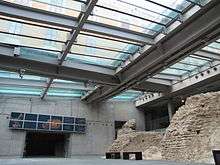
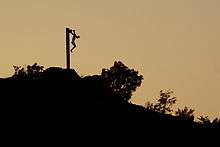
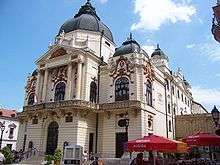
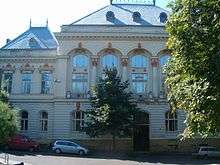
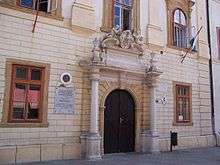
- A good example of the city's history and interesting past can be seen in the main square, where the Gazi Kasim Mosque still stands, and, although consecrated as a church following the retreat of the Ottoman Turks centuries ago, the crescent moon and cross of Islam are still visible on the cupola. Indeed, Pécs is the richest town in Hungary in terms of Turkish architecture, with the ruins of Memi Pasa's Baths and the mausoleum of miracle worker Idris Baba, just two other notable remains. The Yakovalı Hasan Paşa Mosque, dating from the mid-1500s, still functions as an active mosque today. It is open to the public except during Friday services from 2.30 to 3.30 pm.
- Necropolis of Sopianae (UNESCO World Heritage Site)
- Cella Septichora (4th century)
- The Cathedral (11th century, renovated in the 19th century).
- Hungarian Bishop's Palace (12th century)
- University of Pécs (1367), building of the Faculty of Humanities in Ifjúság street. It includes a Botanical Garden.
- Klimo Library (1774). The first public library in Hungary, which was founded by bishop George Klimo.
- Barbakán "Tower" (15th century)
- Ruins in Tettye (1505–1521)
- Széchenyi square (main square)
- The mosque of pasha Qasim (1543–1546). Originally gothic Church: St. Bertalan Cathedral from the 13th century
- Yakovalı Hasan Paşa Mosque (16th century)
- Downtown (Houses from the Middle Ages. Baroque, Classicism, Rococo, Art Nouveau Houses)
- Nádor Hotel (1846) in Széchenyi Square
- County House in Széchenyi Square
- City Hall in Széchenyi Square
- Synagogue (1869)
- Building of the Hungarian Academy of Sciences (1884)
- National Theatre of Pécs (Nemzeti Színház), inaugurated in 1895.
- Eosin glaze of Zsolnay fountain
- Posta (Post) Palace
- Hungaricum House
- Janus Pannonius Museum
- Renaissance Museum
- Csontváry Museum
- Zsolnay Museum
- Victor Vasarely Museum
- Amerigo Tot Museum
- Ethnographic Museum in Pécs
- Natural History Museum in Pécs
- Szerecsen Chemist's Museum
- Gallery of Pécs
- Museum Street
- Zsolnay Mausoleum
- Bóbita (punch and judy show)
- Janus (Pannonius) Theatre
- Croatian Theatre in Pécs
- Third Theatre
- Zoological Garden in Pécs
- Love padlocks
- Magasház (formerly – was deconstructed in 2016)
- TV-Tower in Mecsek Mountain (1960)
Demographics
The majority of the citizens with 84.0% are Hungarians according to the 2011 census. The city's Germans are the largest minority with 4.2%. Followed by the Roma (2.0%), the Serbs (0.2%) and the Romanians (0.2%).[2]
The largest religious group is the Catholics with 39.7% Roman Catholic and 0.3% Greek Catholic. The second largest denomination is the Calvinists (5.2%), the third the Lutherans (1.3%). 27.8% of the population is non-religious.[2]
Climate
| Climate data for Pécs | |||||||||||||
|---|---|---|---|---|---|---|---|---|---|---|---|---|---|
| Month | Jan | Feb | Mar | Apr | May | Jun | Jul | Aug | Sep | Oct | Nov | Dec | Year |
| Average high °C (°F) | 1.6 (34.9) |
4.8 (40.6) |
10.3 (50.5) |
16.0 (60.8) |
20.9 (69.6) |
24.0 (75.2) |
26.3 (79.3) |
25.9 (78.6) |
22.3 (72.1) |
16.6 (61.9) |
8.8 (47.8) |
3.4 (38.1) |
15.1 (59.1) |
| Daily mean °C (°F) | −1.4 (29.5) |
1.3 (34.3) |
5.6 (42.1) |
10.7 (51.3) |
15.5 (59.9) |
18.6 (65.5) |
20.5 (68.9) |
20.1 (68.2) |
16.6 (61.9) |
11.3 (52.3) |
5.1 (41.2) |
0.6 (33.1) |
10.4 (50.7) |
| Average low °C (°F) | −4.0 (24.8) |
−1.7 (28.9) |
1.6 (34.9) |
6.0 (42.8) |
10.5 (50.9) |
13.6 (56.5) |
15.0 (59.0) |
14.7 (58.5) |
11.7 (53.1) |
7.0 (44.6) |
2.2 (36.0) |
−1.7 (28.9) |
6.2 (43.2) |
| Average precipitation mm (inches) | 39 (1.5) |
32 (1.3) |
38 (1.5) |
55 (2.2) |
63 (2.5) |
84 (3.3) |
61 (2.4) |
63 (2.5) |
47 (1.9) |
37 (1.5) |
56 (2.2) |
44 (1.7) |
619 (24.5) |
| Average precipitation days (≥ 1.0 mm) | 7 | 6 | 7 | 8 | 9 | 10 | 7 | 7 | 6 | 6 | 8 | 8 | 89 |
| Average relative humidity (%) | 90 | 85 | 70 | 65 | 65 | 70 | 70 | 70 | 75 | 80 | 85 | 90 | 76.3 |
| Mean monthly sunshine hours | 68.2 | 92.4 | 145.7 | 186.0 | 235.6 | 258.0 | 294.5 | 266.6 | 207.0 | 164.3 | 81.0 | 58.9 | 2,058.2 |
| Source: Hong Kong Observatory.[19] | |||||||||||||
Economy
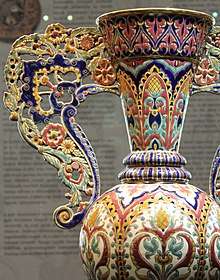
Historically Pécs was well known in Hungary for its industry with several factories, but after the fall of the Iron Curtain many have not managed the economic transition well and went bankrupt (e.g. Pécsi Kesztyűgyár, Pécsi Bőrgyár, Littke Pezsgőgyár etc.).[20] Until some years ago, it had a coal and uranium mine, now only its sand mine exists and is operated by the Hungarian-owned Quartz[21] mining company.
The nationally (and to a limited extent internationally) famous porcelain factory, the Zsolnay Porcelain is the greatest pride of Pécs. The walls and roofs of several public and private buildings in the city are decorated with the company's porcelains contributing to Pécs's unique cityscape.
The Pécsi Sörfőzde (Pécs Brewery) is one of the four main Hungarian breweries (the others being Dreher Breweries, Borsod Brewery, Heineken Hungária), but the only one of them owned fully by Hungarians. It produces a special beer, that is known for not being strained before bottling.[22]
The Hungarian textilmanufacturer Rovitex Hungária,[23] the American crane manufacturer Terex,[24] the Hungarian scale manufacturer Pécsi Mérlegstúdió,[25] the Hungarian furniture manufacturer Megyeri Bútor,[26] the Hungarian cutting-tool manufacturer FORSZ,[27] the German switchboard manufacturer HB-Kapcsolószekrénygyártó (part of the Bader Gruppe),[28] the Hungarian recycling company Alcufer,[29] the Hungarian agricultural vehiclemanufacturer HIDROT,[30] the Hungarian animal husbandry tool manufacturer Önitató,[31] the tobacco factory Pécsi Dohánygyár (owned by British American Tobacco), the Hungarian automotive spare parts manufacturer Matro,[32] the Hungarian safe manufacturer Strauss Metal,[33] the Hungarian packaging machine manufacturer SOMAPAK,[34] the Hungarian plastics producer Termoplast,[35] the Bocz Printing House,[36] the Hungarian pickles manufacturer Babina,[37] the Hungarian plastic product manufacturer Karsai Pécs,[38] the Hungarian metal manufacturer Riner Metal[39] based there and have their production facilities in the city.
There is a gradual development of modern high-tech industry, with Finnish electronics manufacturing company Elcoteq the largest industrial employer in the city, the Hungarian Z Elektronika[40] electronics manufacturer and the Hungarian TG Netcom[41] IT network manufacturer.
The German transportation company, Dachser has a logistics centre in Pécs.[42]
The Biokom[43] waste management and recycling company (owned by the city) is responsible for the transport and recycling of waste in the whole territory of Pécs and the surrounding areas. The energy used in the settlement is produced mainly by the two biomass power plants of Pannonpower (part of Veolia) which consists of a 49,9 MW woodchip-fired and a 35 MW agricultural by-product-fired powerplants.[44] The country's largest solar cell field is also in Pécs, thanks to the city's southern location and longer sunny hours, which can produce about 10 MW energy a year. The solar power plant is operated by MVM Hungarowind (part of the MVM Group).[45]
The Expo Center Pécs Exhibition and Conference Centre provides place for international exhibitions and conferences.[46]
Education
The University of Pécs was founded by Louis I of Hungary in 1367. It is the oldest university in Hungary, and is among the first European universities. In the recent past it used to be divided in two universities, one for Medicine and Orthodontics (POTE)[47] and a larger one for other studies: JPTE (Janus Pannonius Tudományegyetem). The POTE (Pécs University Medical School, now known as the Medical School) has a large English program for general medicine and dentistry (with students from America, Asia, Africa, and European countries - including many Scandinavians) and a new German program. On 1 January 2000 these universities were combined under the name University of Pécs (acronym: PTE - Pécsi Tudományegyetem - University of Pécs).
Politics
The current mayor of Pécs is Attila Péterffy (Everyone for Pécs).
The local Municipal Assembly, elected at the 2019 local government elections, is made up of 26 members (1 Mayor, 18 Individual constituencies MEPs and 7 Compensation List MEPs) divided into this political parties and alliances:[48] Fidesz policies in Pécs have included a law making Homelessness illegal (2014)[49] and an official call to property owners not to make space available for an NGO supported by OSF (2017).[50]
| Party | Seats | Current Municipal Assembly | ||||||||||||||||||
|---|---|---|---|---|---|---|---|---|---|---|---|---|---|---|---|---|---|---|---|---|
| Everyone for Pécs[lower-alpha 1] | 18 | M | ||||||||||||||||||
| Fidesz-KDNP-ÖPE | 7 | |||||||||||||||||||
| Politics Can Be Different | 1 | |||||||||||||||||||
List of mayors
List of City Mayors from 1990:
| Member | Party | Term of office | |
|---|---|---|---|
| Zoltán Krippl | SZDSZ | 1990–1994 | |
| Zsolt Páva | Fidesz | 1994–1998 | |
| László Toller | MSZP | 1998–2006 | |
| Péter Tasnádi | MSZP | 2006–2009 | |
| Zsolt Páva | Fidesz | 2009–2019 | |
| Attila Péterffy | Independent[lower-alpha 1] | 2019– | |
Transport
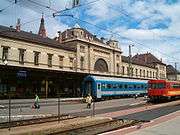
.jpg)
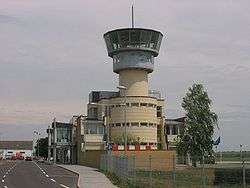
Vehicular traffic
- The M6 motorway connects Pécs and Budapest with the driving time between the two cities taking about 1½ hours now. The entire route opened on 31 March 2010. Route 6 crosses the city giving it an east-west axle and leaves it towards Barcs by the Croatian border. Secondary routes are:
- Route 57: Pécs - Mohács,
- Route 58: Pécs - Drávaszabolcs,
- Route 66: Pécs - Kaposvár.
Although during the last decade connecting main routes inside the city has been an ongoing project, because of their insufficient lengths, this could not free the city from cross traffic. The recently inaugurated M6 motorway may prove to be a solution for this problem.[51][52]
Railway
Pécs is connected to Budapest through Pusztaszabolcs, and has direct connections to Mohács, Nagykanizsa.
Designed by Ferenc Pfaff,[53] the main railway station was built in 1900 and became a listed building in 2008.[54] The building itself was built in the style of Renaissance Eclecticism, and it features reliefs depicting James Watt and George Stephenson designed by Klein Ármin and made by Zsolnay factory [55] A mass transit hub -including a bus terminal, a bus stop and a cab rank zone- is situated on the square in front of the railway station.
Mass transport
Volvo and Kravtex-Credo buses provide the only form of public transport in Pécs, though a tram line did operate from 1913 to 1960, when it was shut down due to changing transportation policy. Most of the remnants of this older system have been removed, though a few rails may still be seen around the city.
Airport
A new airport opened in Pécs Pécs-Pogány International Airport in March 2006. Its main traffic is supplied by smaller charter planes.
Sport
- Pécsi MFC, football club playing in the Nemzeti Bajnokság II
- Pécsi Vasutas SK, football club playing in the Baranya megye (regional) league
- PEAC-Pécs first-class women's professional basketball team
- Pécsi VSK, men's water polo team
- Pécsi Indiánok SK, rugby club
Notable people born in Pécs
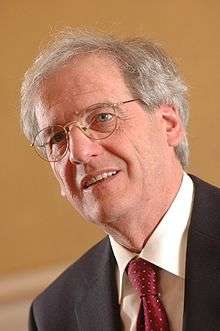
Alfred Forbat, Bauhaus architect
- Károly Balogh Mankóbüki president of the Royal Court of Pécs.
- Marcel Breuer, architect and furniture designer
- Pál Dárdai, football player
- Petar Dobrović, Serb painter and president of the short-lived Baranya-Baja Republic
- József Eötvös (musician), guitarist
- Dezső Ernster, Metropolitan Opera bass
- Sigismund Ernuszt, bishop of Pécs
- Lipót Fejér, mathematician
- Zoltán Gera, football player
- Leopold Hirschfeld, brewer, founder of the Pécsi Sörfőzde
- János Horvay, sculptor
- Katinka Hosszú, swimmer, 3 x gold medallist at the 2016 Olympic Games
- Zsuzsanna Jakabos, swimmer
- Jenő Jandó, pianist
- György Klimó, bishop of Pécs, founder of press and public library
- Dezső Lauber, sportsman and architect
- Kató Lomb, interpreter, language master
- Maximinus (Praetorian Prefect)
- Janus Pannonius, bishop of Pécs
- İbrahim Peçevi (Ibrahim of Pécs), Ottoman historian and chronicler
- Karl (Freiherr) von Pflanzer-Baltin
- Anton von Rosas, ophthalmologist
- Joe Rudán, singer
- László Sólyom, president of Hungary
- Béla Tarr, film director
- Victor Vasarely, artist
- Balázs Zamostny (born in 1992), Hungarian footballer
International relations
Twin towns — Sister cities
Pécs is twinned with:
|
Gallery
- Cathedral
- Archives of Pécs
 Inner city
Inner city- Mosque of Pasha Qasim
 Király Street
Király Street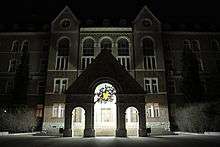 University of Pécs
University of Pécs- Király Street
 "Posta" Palace
"Posta" Palace Eosin glaze of Zsolnay fountain
Eosin glaze of Zsolnay fountain Jókai Square
Jókai Square City Centre
City Centre- Nádor Hotel
 Chapel
Chapel- Havhegy Chapel
- Ruins in Tettye

 Synagogue
Synagogue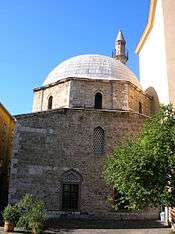
 Hungarian Academy of Sciences in Pécs
Hungarian Academy of Sciences in Pécs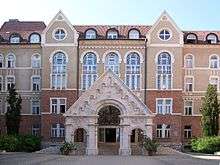 University of Pécs - Faculty of Human and Real sciences
University of Pécs - Faculty of Human and Real sciences Lajos Kossuth statue
Lajos Kossuth statue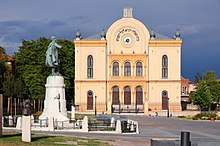 Kossuth square and Great Synagogue
Kossuth square and Great Synagogue French (Napoleonic War) monument
French (Napoleonic War) monument Tettye
Tettye Aerial view
Aerial view Panorama
Panorama
See also
- Love padlocks
- Music of Pécs
- Pécs Brewery
- Lake Pécs
References
- History of Pécs (in Hungarian)
- "OECD - FUNCTIONAL URBAN AREAS IN OECD COUNTRIES: HUNGARY" (PDF).
- "Detailed Gazetteer of Hungary". www.ksh.hu.
- "Pécs, a kultúra városa". Pécs, a kultúra városa.
- "Early Christian Necropolis of Pécs (Sopianae)". UNESCO. 'UNESCO'. 2015-03-03. Retrieved 2015-03-03.
- www.okm.gov.hu, Oktatási és Kulturális Minisztérium oldala, Az Oktatási Évkönyv 2008/2009 letölthető PDF-formátumban. Archived 2007-06-25 at the Wayback Machine
- Pécs kulturális központ Archived 2009-03-15 at the Wayback Machine
- "Pécs, a toleráns város - Hetek Közéleti Hetilap". Hetek Közéleti Hetilap.
- www.livcomawards.com, Official site of LivCom awards Archived 2010-03-12 at the Wayback Machine
- www.ddrkh.hu, 2008. november 12. - Pécs második lett az Élhető Települések döntőjében Archived 2009-03-05 at the Wayback Machine
- "BETA – Pécs-Baranyai Kereskedelmi és Iparkamara". www.pbkik.hu.
- "Már építik a pécsi Búza téren a Corsót - BAMA".
- "www.peh.hu, Elindult a Sopianae-terv, épül a Déli Ipari Park".
- [Pécsre áramlik a tőke www.origo.hu, 2008. 07. 17. - Pécsre áramlik a tőke]
- Slovenská reč: časopis pre výskum a kultúru slovenského jazyka - Google Knihy. Books.google.sk. 1998. Retrieved 2013-03-12.
- Pécs klímája Archived 2008-06-09 at the Wayback Machine
- Kft., BioDigit. "Mecsek-hegység - Lexikon ::". www.kislexikon.hu.
- Lajos Gubcsi, Hungary in the Carpathian Basin, MoD Zrínyi Media Ltd, 2011
- Ladislav Heka, 2016, The Borders Of Baranja Since The Middle Ages Until Today, http://baza.gskos.hr/Graniceidentiteti.pdf #page=29
- Climatological Information for Pecs, Hungary, accessed 6 April 2012.
- Viktor, Gyimesi (26 July 2016). "Tele van Pécs az iparoscsaládok örökségeivel". www.pecsma.hu.
- "Quartz Kft - Bemutatkozás". quartzkft.hu.
- "A stílusod egyedi, kívül, belül - Pécsi Sör". pecsisor.hu.
- "Új gyártócsarnokot kap a pécsi Rovitex Hungária Kft. - BEOL".
- "Locations - Terex Cranes". www.terex.com.
- "Cégünkről". merlegstudio.hu.
- butorlapszabaszat.hu. "Megyeri Bútor Kft. – bútorlapszabászat – Pécs - Országos Bútorlapszabászat és Lapszabászat kereső". butorlapszabaszat.hu.
- "FORSZ Ltd. -". forszkft.hu.
- "Kontakt".
- "Bemutatkozás — Alcufer Kft". www.alcufer.hu.
- Kft., Markcon Informatikai. "HIDROT Kft. » Cégbemutató". hidrot.hu.
- "Önitató".
- "Rólunk – Matro". matro.hu.
- "Rólunk - Strauss Metal Kft. Biztonságtechnika kis és nagyker, Páncélszekrény, széf, lemezszekrény gyártás, Lemezvágás, Lemezmegmunkálás, lézervágás, élhajlítás". www.straussmetal.hu.
- "Somapak - History". somapak.hu.
- "Company review - TERMOPLAST Műanyagfeloldgozó Kkt". www.termoplast.hu.
- "Bocz nyomdaipari Kft. – Ofszet- és digitális nyomda Pécsen". bocznyomda.hu.
- Kft., Markcon Informatikai. "Pannon Flavour". pannonflavours.org. Archived from the original on 2018-10-11. Retrieved 2018-05-08.
- "Karsai Pecs Kft. Company Profile - EMIS". www.emis.com.
- Web-E. "Riner-Metal Kft". riner.hu.
- "Z Elektronika Kft". zelektronika.eu.
- "TG Netcom Kft. - Our company". www.tgnetcom.hu.
- "Dachser Telephelyek".
- "CÉGBEMUTATÁS - Biokom".
- "Pannonpower - Tevékenységünk". Archived from the original on 2018-05-09. Retrieved 2018-05-08.
- Zrt., REGON Média. "Óriási naperőmű épült a pécsi hőerőmű helyére".
- "Expo Center Pécs". www.expocenterpecs.hu.
- "PTE Általános Orvostudományi Kar". PTE Általános Orvostudományi Kar.
- "Városi közgyűlés tagjai 2019-2024 - Pécs (Baranya megye)". valasztas.hu. Retrieved 2019-10-29.
- "Pécs bans homeless from public areas". The Budapest Beacon. 2014-09-26. Retrieved 2018-02-28.
- "Pécs adopts declaration calling on property owners to refrain from renting property to OSF grantee". The Budapest Beacon. 2017-12-14. Retrieved 2018-02-28.
- "Március 31-én átadják az M6-os autópályát - BAMA".
- "Időre elkészül az M6-os autópálya - videó - BAMA".
- www.idokep.hu, Pécs
- napilapcsoport.hu. "Pécsi Napilap". www.pecsinapilap.hu.
- "Expired Redirects". sketchup.google.com.
- "Twin Towns - Graz Online - English Version". www.graz.at. Archived from the original on 2009-11-08. Retrieved 2010-01-05.
- Jérôme Steffenino, Marguerite Masson. "Ville de Grenoble –Coopérations et villes jumelles". Grenoble.fr. Retrieved 16 May 2013.
- "Partner Cities of Lyon and Greater Lyon". © 2008 Mairie de Lyon. Archived from the original on 2009-07-19. Retrieved 2009-07-17.
- "Tucson Sister Cities". Interactive City Directory. Sister Cities International. Archived from the original on 4 October 2013. Retrieved 4 September 2013.
- "News". Shiraz Municipality. 10 May 2016. Retrieved 14 May 2016.
- "Kraków - Miasta Partnerskie" [Kraków -Partnership Cities]. Miejska Platforma Internetowa Magiczny Kraków (in Polish). Archived from the original on 2013-07-02. Retrieved 2013-08-10.
- "Međunarodna suradnja Grada Pule". Grad Pula (in Croatian and Italian). Archived from the original on 2012-05-05. Retrieved 2013-07-28.
- Notes
- Supported by Opposition coalition.
External links
| Wikimedia Commons has media related to Pécs. |
| Wikivoyage has a travel guide for Pécs. |
- Official homepage
- Baranya County Museums' Directorate
- Pécs in 360 panoramic images
- Aerial photography: Pécs
- Glas Koncila Hrvatska nazočnost u "gradu s pet crkava", Oct 7, 2007 (page about Croats in Pécs)
- Mecsek-1956-History
- Pécs szállás (accommodation)
- Pécs at funiq.hu (in English)
- Csakis itt Pécsen! – videoclip

